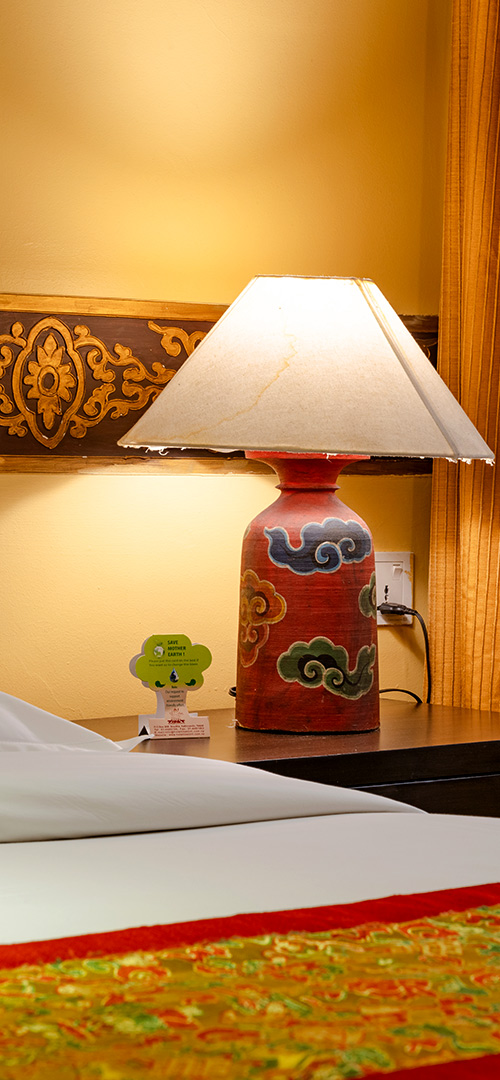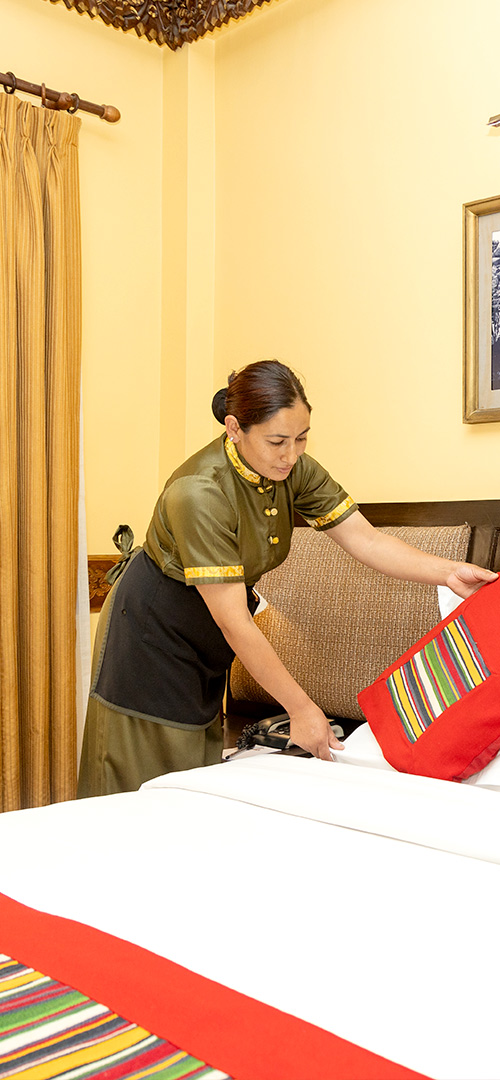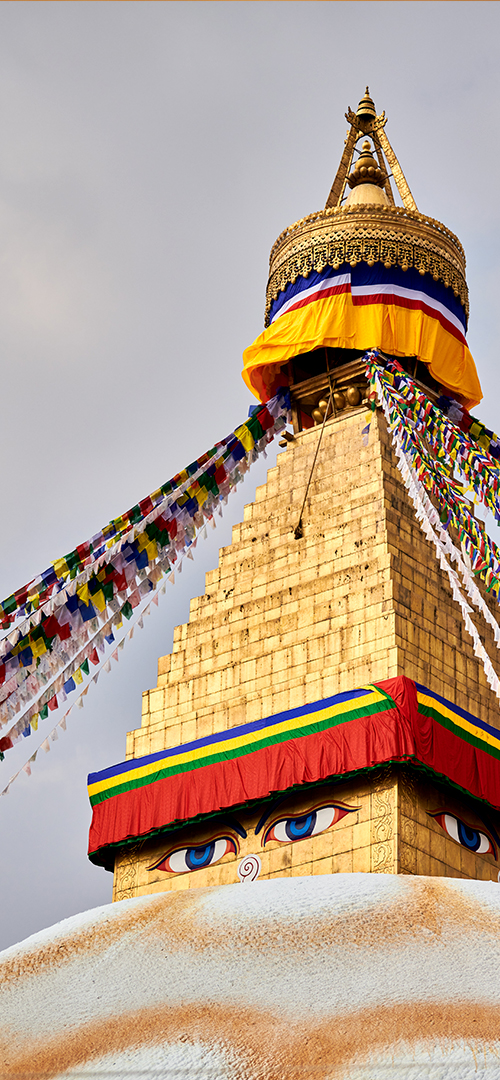Explore The City
Travel guide
Title
Title
Title
Title
Title
Title
Title
Title
Title
Title
Boudhanath

The magnificent Boudhanath Stupa is one of the world’s biggest stupas and the most sacred Buddhist site in Nepal. The mammoth whitewashed dome with its piercing Buddha eyes is mounted on three enormous tiers shaped like mandalas. The dome is finished with a gilded tower and decorated with colorful prayer flags — a sight to behold. According to legend, it was built in the 7th century by the Tibetan Emperor Songtsen Gampo after converting to Buddhism. Destroyed by invaders in the 14th century, the current stupa is fairly new.
Visitors can join locals, monks, nuns and Buddhist pilgrims on their ritual kora, circling the stupa and spinning its prayer wheels. At any time, the bustling streets around Boudha provide a fascinating glimpse into Tibetan culture and Himalayan Buddhist life.
Pashupatinath Temple
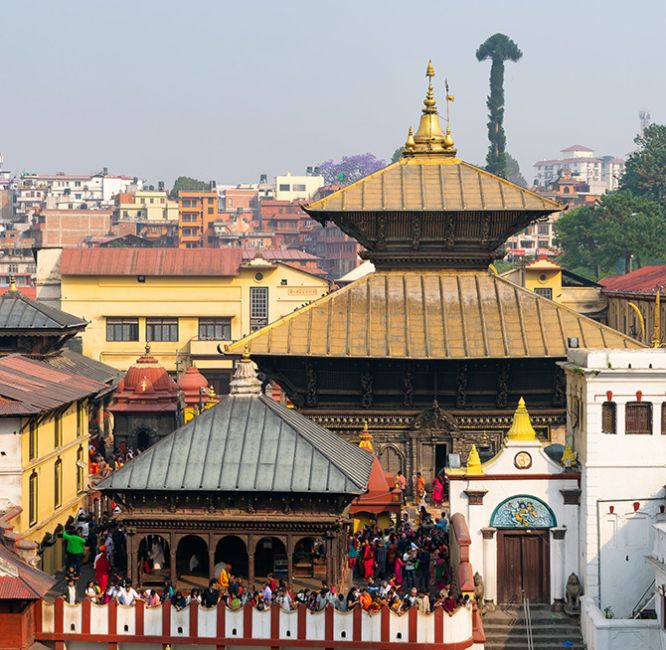
Located less than 10 minutes away from Hotel Tibet International, Pashupatinath Temple is one of the holiest Hindu shrines in the world. Built in the 5th century, this UNESCO World Heritage Site is dedicated to Lord Shiva, the Lord of all living beings. Situated on the banks of the Bagmati River, the main temple complex is accessible to Hindus only. The main pagoda-style temple houses the Shiva linga and features a gilded silver roof, four silver doors and intricate wood carvings. Outside of the west gate of the temple is the most astounding, huge statue of Nandi, Shiva’s bull.
Non-Hindus can marvel at the temple from the opposite western bank of Bagmati, exploring smaller temples adorned with shiva lingams. Colorful sadhus (holy men) and mischievous monkeys against the forested area add to the atmosphere. The Bagmati is also a holy site for open cremations of Hindus where the last rites are performed. This poignant scene of life and death unfolds before visitors, offering a profound glimpse into Hindu traditions.
Swayambhunath
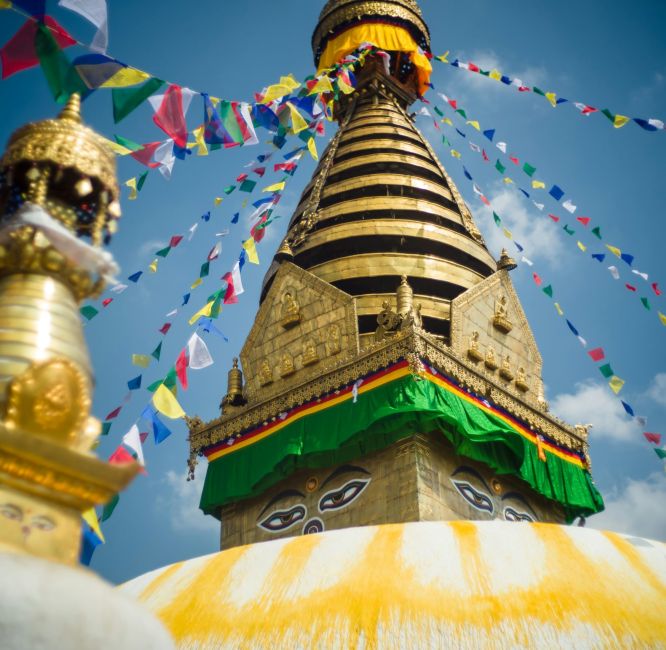
Also known as the “Monkey Temple”, Swayambhunath is a revered Buddhist pilgrimage site perched atop a hill northwest of Kathmandu. This 5th-century UNESCO World Heritage Site is crowned by an iconic white dome stupa with a gilded spire. The stupa’s cube-shaped harmika features Buddha’s eyes gazing in four directions, symbolizing omniscience. Prayer wheels encircle the base, interspersed with statues of the Pancha (five) Buddha. The complex houses Buddhist monasteries, the Hindu Harati Devi Temple, and numerous chaityas (small stupas).
Vibrant prayer flags, circumambulating pilgrims, and the aroma of incense create a mesmerizing atmosphere. The surrounding forest is home to playful monkeys, lending the site its colloquial name. Visitors can ascend via a long staircase or drive part way up before climbing the remaining steps. The panoramic views of Kathmandu Valley from the summit are breathtaking.
Kathmandu Durbar Square
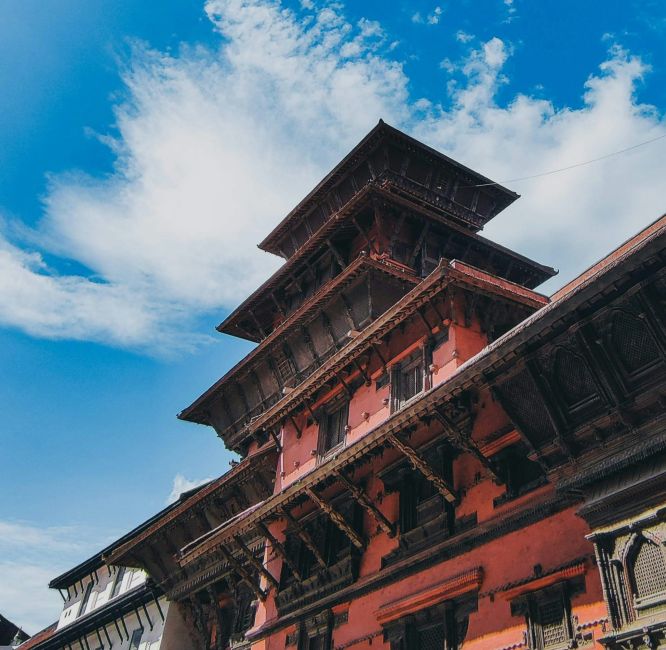
Locally known as Hanuman Dhoka Durbar Square, the UNESCO World Heritage site, is the heart of Kathmandu’s cultural and historical legacy. This former royal complex, one of three Durbar Squares in the Kathmandu Valley, served as the coronation site for Nepalese monarchs. The inner complex houses the old royal palaces of the Malla and Shah dynasties, featuring exquisite courtyards, ponds, and temples. Much of this area has been converted into museums, offering visitors a glimpse into Nepal’s rich royal history.
The outer complex is a maze of pagoda-style temples, showcasing the exceptional craftsmanship of Newa artisans. Intricately carved wooden structures, stone sculptures, and metalwork adorn these religious edifices. Among them, the Taleju Temple and the Kasthamandap (which gave Kathmandu its name) stand out for their architectural brilliance. A highlight is the Kumari Ghar, home to the Living Goddess Kumari. While non-Hindus cannot enter the building, visitors can admire its ornate exterior and occasionally catch a glimpse of the young goddess at her window.
The square bustles with life, hosting numerous souvenir shops, cafes, and restaurants. Despite damage from the 2015 earthquake, ongoing restoration efforts ensure that Hanuman Dhoka Durbar Square remains a testament to Nepal’s cultural heritage and a must-visit destination for history enthusiasts and culture seekers alike.
Patan Durbar Square
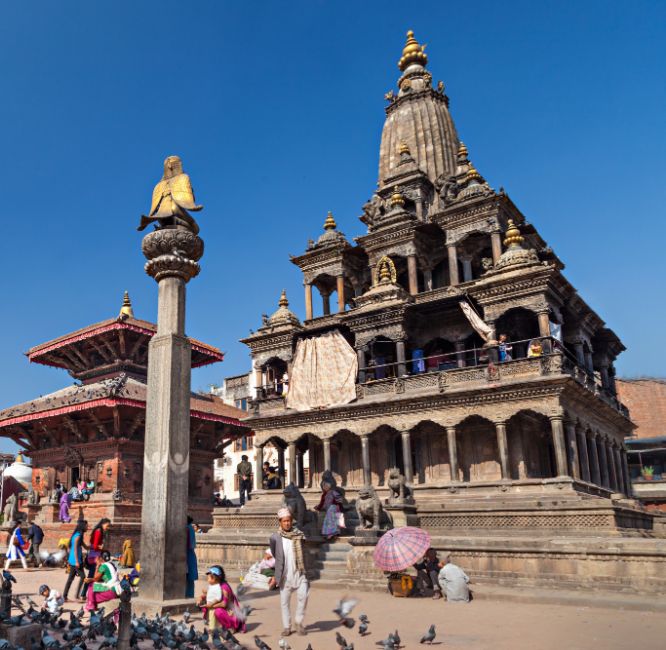
A UNESCO World Heritage Site, Patan Durbar Square is the cultural heart of Patan in the Kathmandu Valley. Developed primarily during the Malla dynasty (14th-18th centuries), it exemplifies Newar architecture at its finest.
The square features an array of stunning temples, including the Krishna Mandir, Bhimsen Temple, Hari Shankar Temple and Shiva Temple, a showcase of the rich culture, artistry and heritage of Newa people. The square is also home to a traditional water spout called Manga: Hiti and the ancient Malla palace. Now housing the Patan Museum, the palace’s notable features include the Sundari Chowk with its Tusha Hiti (Royal Bath), Mul Chowk for ceremonies, and the Queen’s pond.
The complex blends historical grandeur with vibrant community life, ringing with prayer bells, hymns and both traditional rituals and modern events. Despite damage from the 2015 earthquake, ongoing restoration preserves this testament to Nepal’s artistic prowess. Patan Durbar Square offers visitors an immersive experience into the country’s rich cultural heritage, where ancient traditions and contemporary life seamlessly coexist.
Bhaktapur Durbar Square
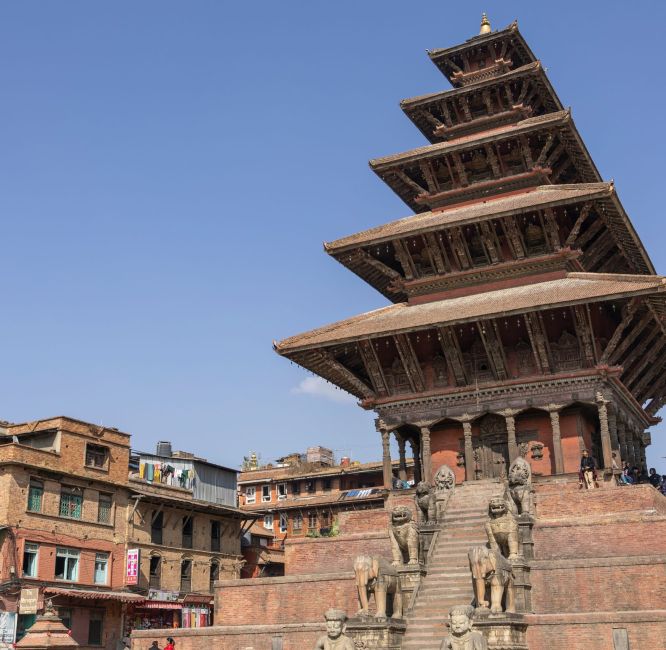
Located in the ancient city of Bhaktapur, the namesake Durbar Square is the third of Kathmandu Valley’s UNESCO World Heritage Durbar Squares. A magnificent showcase of medieval Nepalese art and architecture, the square is renowned for its intricate wood carvings, terracotta temples, and unique architectural styles.
The largest of the three squares, its key attractions include the 55-Window Palace, the Golden Gate, the Lion’s Gate and the statue of King Bhupatindra Malla. Bhaktapur Durbar Square is also home to the National Art Gallery and several museums showcasing traditional crafts. The surrounding area is famous for its pottery and textile industries, offering visitors a glimpse into traditional Newari craftsmanship.
When in the square don’t miss out on enjoying local flavors such as juju dhau, the king of curds and khuwa ko baraf, special milk lollies.
Sundarijal to Dhap Reservoir hike
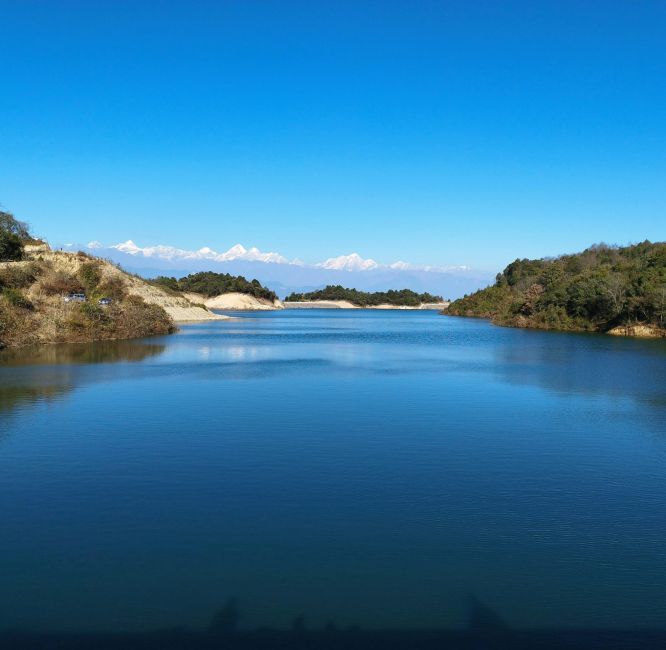
A popular hiking trail that starts off very close to Hotel Tibet International is the Sundarijal-Dhap-Reservoir hike. The 4-hour hike starts off at Sundarijal, following the trail through lush forests of Shivapuri National Park. The trail is a steep climb of stairways for the first hour passing through small village settlements. The second half of the trail follows clear streams and thick forest with plenty of opportunities for bird-watching.
The trek culminates in Dhap Dam or Dhap Reservoir, a man made lake. Enjoy the breeze and the sunshine along with the waves of the lake. Another 30-minutes walk from the reservoir takes you to Chisapani, a small hilltop village at 2,215 meters. This moderate 4 to 5 hour hike serves as an excellent introduction to trekking in Nepal, suitable for both beginners and experienced hikers.
